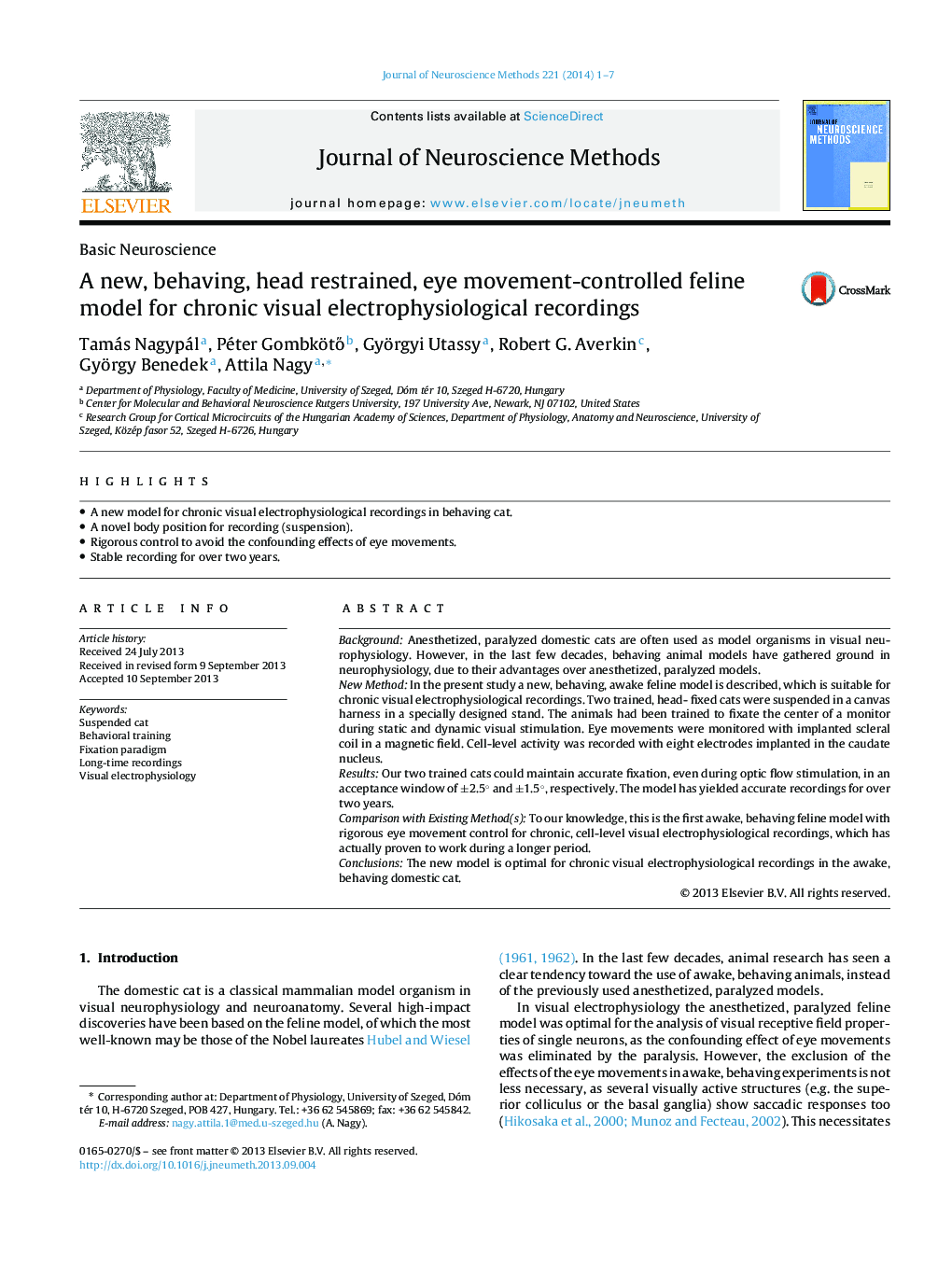| کد مقاله | کد نشریه | سال انتشار | مقاله انگلیسی | نسخه تمام متن |
|---|---|---|---|---|
| 6268809 | 1614648 | 2014 | 7 صفحه PDF | دانلود رایگان |
- A new model for chronic visual electrophysiological recordings in behaving cat.
- A novel body position for recording (suspension).
- Rigorous control to avoid the confounding effects of eye movements.
- Stable recording for over two years.
BackgroundAnesthetized, paralyzed domestic cats are often used as model organisms in visual neurophysiology. However, in the last few decades, behaving animal models have gathered ground in neurophysiology, due to their advantages over anesthetized, paralyzed models.New MethodIn the present study a new, behaving, awake feline model is described, which is suitable for chronic visual electrophysiological recordings. Two trained, head- fixed cats were suspended in a canvas harness in a specially designed stand. The animals had been trained to fixate the center of a monitor during static and dynamic visual stimulation. Eye movements were monitored with implanted scleral coil in a magnetic field. Cell-level activity was recorded with eight electrodes implanted in the caudate nucleus.ResultsOur two trained cats could maintain accurate fixation, even during optic flow stimulation, in an acceptance window of ±2.5° and ±1.5°, respectively. The model has yielded accurate recordings for over two years.Comparison with Existing Method(s)To our knowledge, this is the first awake, behaving feline model with rigorous eye movement control for chronic, cell-level visual electrophysiological recordings, which has actually proven to work during a longer period.ConclusionsThe new model is optimal for chronic visual electrophysiological recordings in the awake, behaving domestic cat.
Journal: Journal of Neuroscience Methods - Volume 221, 15 January 2014, Pages 1-7
